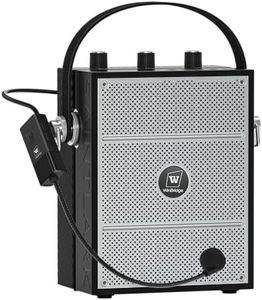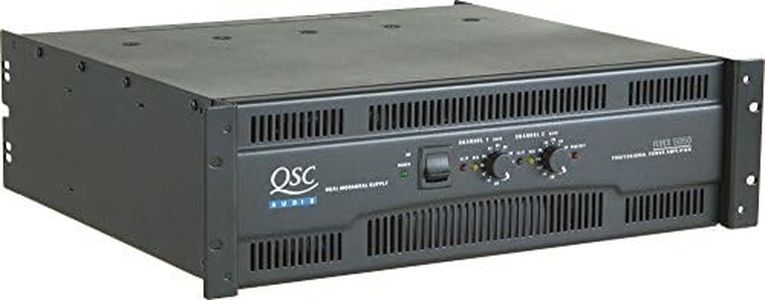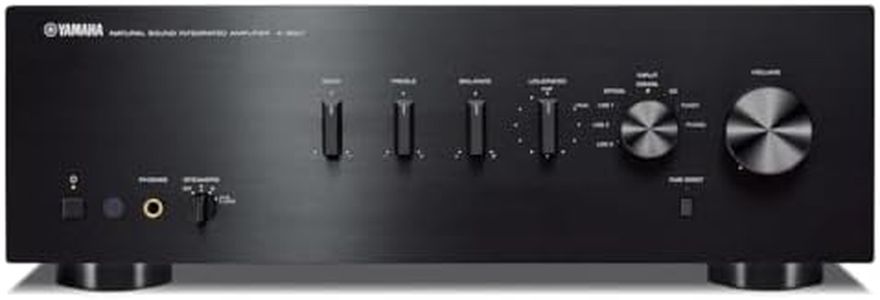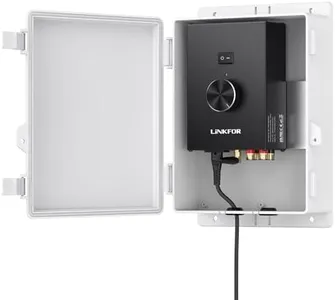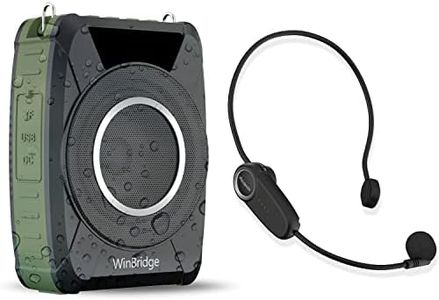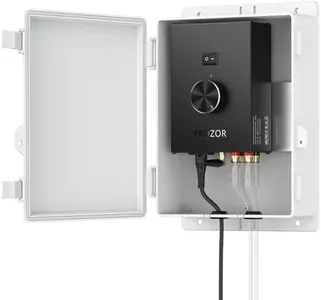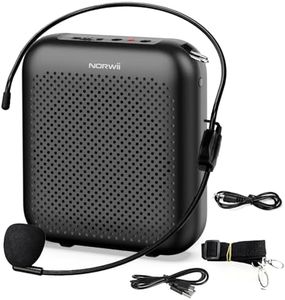10 Best Dj Amplifiers 2025 in the United States
Our technology thoroughly searches through the online shopping world, reviewing hundreds of sites. We then process and analyze this information, updating in real-time to bring you the latest top-rated products. This way, you always get the best and most current options available.

Our Top Picks
Winner
Crown Power Amplifier, 650-Watts (XLS2002)
Most important from
524 reviews
The Crown Power Amplifier, 650-Watts (XLS2002), is a solid choice for DJs looking for a powerful and efficient amplifier. It delivers a substantial 650 watts of power at 4 ohms, ensuring strong performance for most DJ setups. One of its standout features is the Class D amp with Crown's Drive Core technology, which contributes to its lightweight nature, coming in at under 11 pounds. This makes it highly portable and easy to handle during setups and breakdowns.
The amplifier also boasts higher DSP capabilities, offering more control over your sound with features like a band-pass filter per channel. This can be particularly useful for fine-tuning your audio in different environments. Additionally, the selectable input sensitivity options (1.4Vrms and 0.775Vrms) allow for flexibility in driving the amp to its full potential with various input sources. The cooling system is designed to minimize distractions, with the option to turn off all LED indicators except for clip and thermal, which is beneficial in dark venues.
On the connectivity front, it includes balanced XLR, TRS, and RCA inputs, as well as Speakon outputs, providing versatility for different equipment setups. The Crown Power Amplifier, 650-Watts (XLS2002), is well-suited for DJs who need a reliable, portable, and powerful amplifier with advanced control features, though users should consider their specific sound quality needs and venue size before making a decision.
Most important from
524 reviews
Crown, 2 Two-Channel, 525W @ 4Ω Power Amplifier, Black, 525-Watts (XLS1502)
Most important from
524 reviews
The Crown XLS1502 is a solid choice for DJs or small to medium live sound setups needing reliable power and flexibility. It delivers 525 watts per channel at 4 ohms, with even higher power available at 2 ohms and bridged mode, so it can handle various speaker configurations. Its Class D design with DriveCore tech keeps it lightweight (under 9 pounds) and energy efficient, which is great if you need portable gear. The amplifier offers selectable input sensitivity and multiple input types (XLR, 1/4", RCA), making it compatible with most DJ mixers and audio sources. Its advanced DSP features, including bandpass filters and Peakx Limiters, help you tailor the sound precisely and protect your speakers from overload. The cooling system uses quiet forced-air fans to prevent overheating during long gigs, adding to reliability.
While it has good power for its size, those running very large setups might find it insufficient. The sleep mode and menu lock are thoughtful features that add convenience and security for professional environments. If you want a versatile, lightweight, and robust amplifier for DJ use with decent power and control options, the Crown XLS1502 is a fitting option. For extremely high-end sound purity or very large venues, bigger or more specialized amps might be more suitable.
Most important from
524 reviews
QSC RMX5050 Power Amplifier
Most important from
10 reviews
The QSC RMX5050 is a powerful DJ amplifier that delivers around 2000 watts of output power, which is ample for driving large speaker setups at clubs or events. It supports a range of speaker impedances, making it flexible for different sound system configurations. With a single fan for cooling, it maintains stable operation without excessive noise, though the weight of 75 pounds makes it less portable than lighter models. The amplifier uses Speakon and binding post connectors, which are standard and reliable for secure speaker connections.
QSC is known for clean sound performance with low distortion, so you can expect clear audio output suitable for professional DJ use. Its robust design and solid wattage make it ideal for those who need dependable, high-power amplification rather than a compact or lightweight option. Newer models might offer more advanced features or better efficiency, so if portability or the latest tech is important, you might want to explore other options.
For DJs who prioritize strong, reliable power and sound quality, the RMX5050 remains a solid choice.
